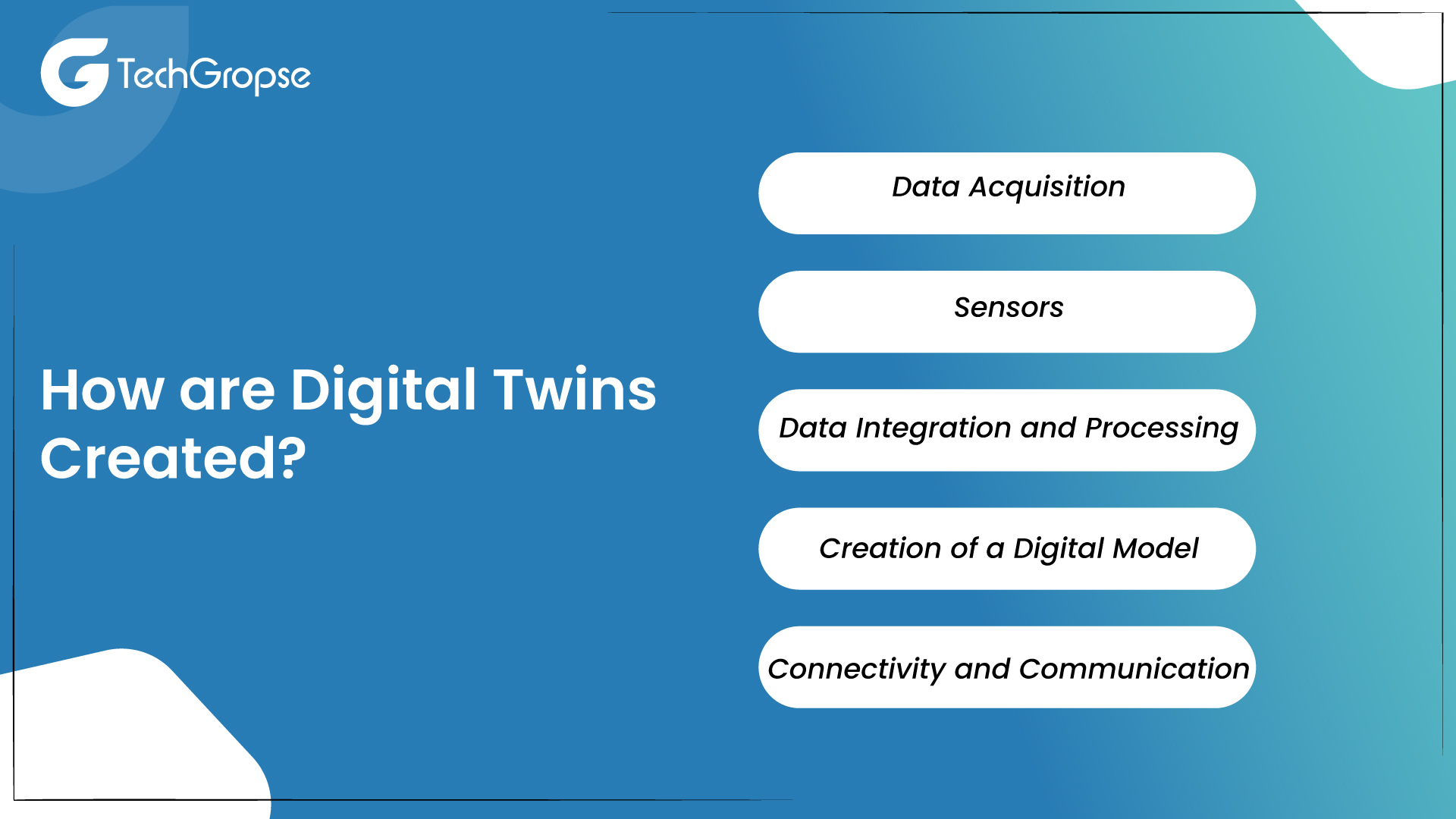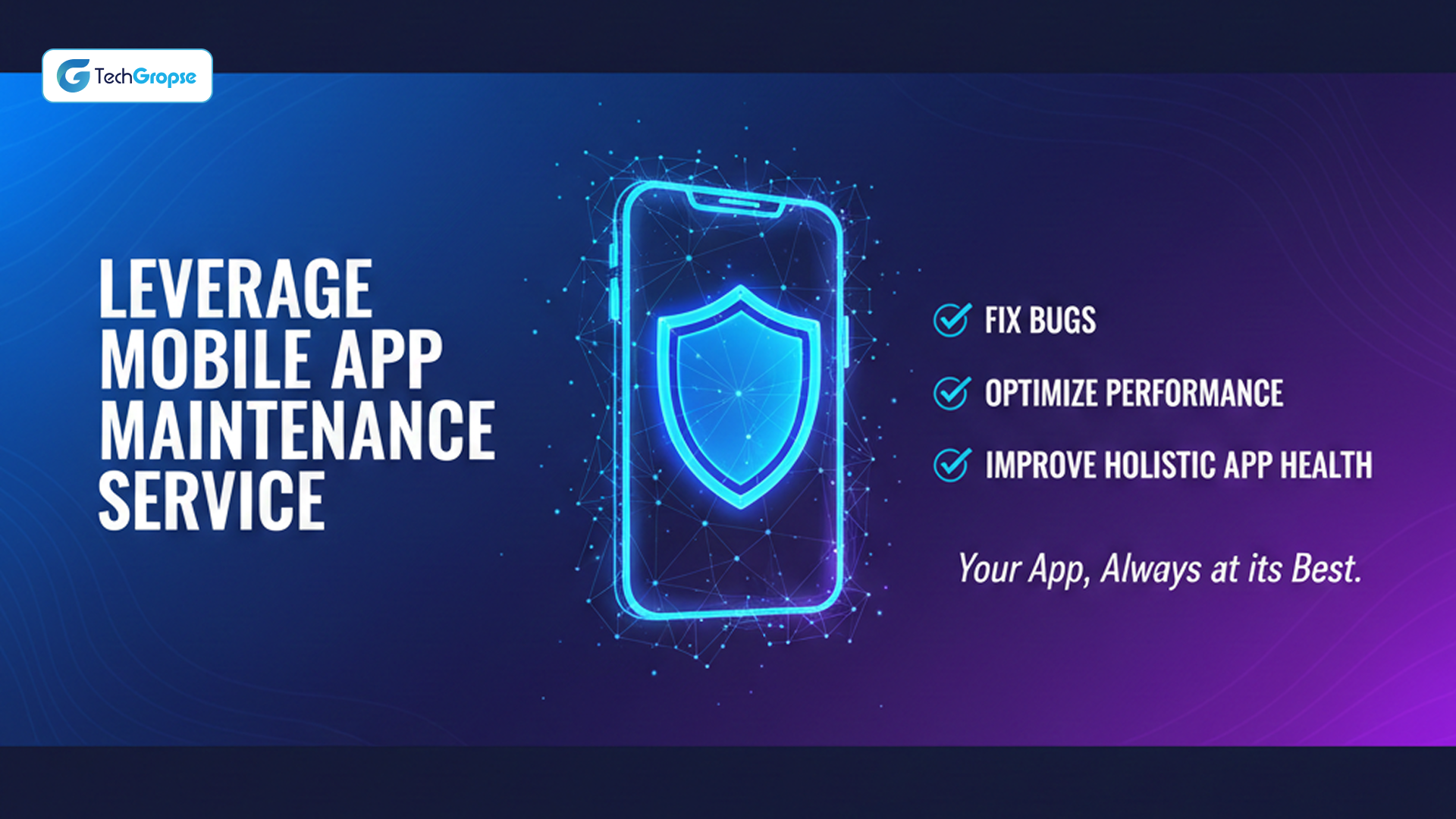Welcome to the fourth industrial revolution, also known as Industry 4.0. It’s like a super cool upgrade that brings us awesome new things. We now have a fast internet that connects people from all over the world. So are you thinking about how can digital Twin technology help your business grow?
But wait, there’s more!
We have the Internet of Things (IoT), allowing objects to communicate with each other through a secret language. We even have artificial intelligence and machine learning. It’s like having smart robots that can learn and do amazing things.
The use of virtual replicas of real objects is becoming increasingly popular. According to Grand View Research, the market for these digital twins is predicted to reach a staggering $11.12 billion by 2022. Furthermore, it is projected to grow at a rate of 37.5% per year from 2023 to 2030.
This post explores the different ways in which digital twin technology helps businesses enhance operational efficiency, and improve product development and testing processes.
Understanding the potential of digital twins technology is crucial for businesses aiming to stay competitive and drive growth in an increasingly digital landscape.
What is Digital Twin Technology and Why is it Important?
Digital twin technologies are like having a virtual doppelgänger of your physical product, process, or system. It’s a digital replica that mirrors the real-world object in real-time, which can be accessed and manipulated for various purposes.
First off, these applications help organizations see how digital twin technology help your business grow, and their products are being used by real people. It’s like having a virtual version of the product that shows you what’s happening in real time.
Next, they use something called predictive analytics to make their assumptions better. It’s like using smart computers to guess what might happen in the future based on all the information they have.
Before knowing how digital twin technology help your business grow you should know these digital twin applications also help manage all the complicated connections between different systems. It’s like making sure everything works together smoothly, even if there are a bunch of different parts involved.
They also create something called a digital thread. It’s like a fancy way of saying that they connect all these different systems and make sure they can trace back where things came from. It’s like following a trail of breadcrumbs to see how everything fits together and how digital twin technology help your business grow.
Even Digital twin technology companies use these applications to fix problems with systems and devices that are far away. It’s like having a remote control that can fix things from a distance. How cool is that?
Historical Background and Evolution of Digital Twin Technology
Digital twin technology has its roots in NASA’s use of digital replicas for space missions in the early 2000s. Since then, it has evolved and found applications in various industries such as manufacturing, healthcare, and energy.
With advancements in IoT sensors, data analytics, and cloud computing, digital twins have become more powerful and accessible than ever before.
What are the Types of Digital Twins?
Digital twins come in various types, each serving specific purposes across different industries. The main types of digital twins include:
1. Product Twins
Represent a digital replica of a physical product. It includes details about the product’s design, structure, and behavior. Product twins are valuable during the design and prototyping phases.
2. Process Twins
Focus on replicating and simulating processes within a system or organization. It helps in optimizing workflows, identifying bottlenecks, and improving overall efficiency.
3. System Twins
Encompasses the digital representation of an entire system, incorporating multiple interconnected components. System twins are used to monitor, analyze, and optimize complex systems.
4. Asset Twins
Specific to physical assets such as machinery, equipment, or infrastructure. Asset twins help in real-time monitoring, predictive maintenance, and overall management of physical assets.
What are the Benefits of Using a Digital Twin Technology?

You might be thinking about how digital twin technology help your business grow. Well, digital twins offer a variety of benefits across different industries by creating virtual replicas of physical objects, systems, or processes.
Here are 5 advantages of using digital twins:
1. Improved Decision-Making
- Digital twins provide real-time data and insights, allowing for more informed and data-driven decision-making.
- They enable a better understanding of complex systems, facilitating more accurate and timely responses to changes or issues.
2. Optimized Performance
- Monitoring the digital twin can help optimize the performance of physical assets or processes by identifying inefficiencies and suggesting improvements.
- Predictive analytics based on digital twin data can anticipate maintenance needs, reducing downtime and enhancing overall efficiency.
3. Cost Savings
- Digital twins can contribute to cost savings by preventing equipment failures through predictive maintenance, reducing operational costs, and maximizing resource utilization.
- Simulating scenarios in the digital twin environment can help identify cost-effective solutions before implementing changes in the physical world.
4. Innovation and Prototyping
- Digital twins facilitate the testing and prototyping of new ideas and innovations in a virtual environment before committing resources to physical implementation.
- This accelerates the product development cycle and reduces the risk associated with introducing new technologies.
5. Remote Monitoring and Control
- With digital twins, businesses can remotely monitor and control physical assets. This is particularly valuable in industries such as manufacturing, where real-time adjustments can be made to optimize production processes or address issues without the need for on-site presence.
Know How Does Digital Twin Technology Help Your Business Grow?
An Android app development company focuses on building new technology. Digital twin technology can significantly contribute to business growth by providing a virtual representation of physical objects, systems, or processes.
Here are several ways in which digital twin technology help your business grow:
1. Enhanced Customer Experience
Hire dedicated developers who understand how customers interact with products or services in the real world is crucial. Digital twins can capture and analyze customer usage patterns, enabling businesses to tailor offerings, improve user experiences, and meet evolving customer needs.
2. Lifecycle Management
Digital twin technology help your business grow by supporting the entire lifecycle of assets or products, from design and development to operation and maintenance, ensuring comprehensive management and optimization.
3. Customer Experience Enhancement
In industries like retail or manufacturing, digital twin technology help your business grow or services to customer preferences, leading to a more personalized and satisfying customer experience.
4.. Regulatory Compliance
A mobile app development company is aware that digital twins assist in tracking and ensuring compliance with regulatory requirements, providing a transparent record of activities and conditions for auditing purposes.
5. Risk Management
Digital twin technology help your business grow and enables businesses to model and assess potential risks in a controlled environment. This includes identifying vulnerabilities, testing contingency plans, and improving overall resilience to unforeseen events.
6. Supply Chain Visibility
Digital twins provide end-to-end visibility into the supply chain, helping businesses monitor and optimize each stage. This includes tracking inventory levels, managing logistics, and identifying potential bottlenecks, leading to a more responsive and agile supply chain.
How are Digital Twins Created?

Digital twins work by creating a virtual replica or representation of a physical object, system, or process. This virtual counterpart, known as the digital twin, is a dynamic model that mirrors the real-world entity in both form and function.
Here’s a general overview of how digital twins work and how digital twin technology help your business grow:
1. Data Acquisition
The foundation of a digital twin is the acquisition of real-time data from sensors, devices, and other sources associated with the physical entity. This data can include information about the object’s location, condition, performance, and other relevant parameters. This way digital twin technology help your business grow.
2. Sensors
Sensors play a crucial role in capturing the intricate operational nuances of processes and assets. They gather data on parameters such as pressure, temperature, and vibration, offering a comprehensive view of the asset’s performance. Additionally, environmental factors like air quality, humidity, and temperature contribute to a holistic understanding of the asset’s functional context.
3. Data Integration and Processing
The collected data is integrated and processed to create a comprehensive digital model. Advanced analytics, machine learning, and other computational techniques may be employed to extract meaningful insights from the raw data.
4. Creation of a Digital Model
The processed data is used to build a virtual representation that mirrors the physical entity. This model can be a 3D representation, a mathematical model, or a combination of both, depending on the complexity and requirements of the system.
5. Connectivity and Communication
Digital twins are often connected to the physical entity in real time, allowing for bidirectional communication. This means that changes in the physical world are reflected in the digital twin, and vice versa. This connectivity is crucial for keeping the digital twin updated and relevant.
6. Simulation and Analysis
One of the key functionalities of how digital twin technology help your business grow is the ability to simulate and analyze different scenarios. Businesses can use digital twins to test and optimize processes, predict outcomes, and identify potential issues before they occur in the real world.
7. Monitoring and Control
Digital twins enable continuous monitoring of the physical entity’s performance. This real-time monitoring allows for the early detection of anomalies or deviations from expected behavior. In some cases, digital twins also support remote control, enabling operators to make adjustments or intervene as needed.
8. Historical Data Storage
Digital twin technology help your business grow by storing historical data, providing a timeline of the physical entity’s behavior over time. This historical perspective is valuable for trend analysis, performance evaluation, and retrospective understanding of events.
9. Integration with IoT and AI
Internet of Things (IoT) devices play a crucial role in feeding real-time data to digital twins. Artificial intelligence (AI) technologies, including machine learning algorithms, enhance the capabilities of digital twins by enabling predictive analytics and autonomous decision-making for digital twin technology help your business grow.
10. Feedback Loop and Continuous Improvement
The insights gained from the digital twin’s analysis can be fed back into the physical system to drive improvements. This creates a continuous feedback loop where the digital twin becomes a tool for ongoing optimization and innovation.
What are Successful Industry Use Cases of Digital Twins?
Digital twins have found successful applications across various industries, demonstrating their versatility and effectiveness in solving specific challenges.
Here are some notable on demand app development or industry use cases of digital twins:
1. Manufacturing
Use Case: Predictive Maintenance
Digital twins of manufacturing equipment enable predictive maintenance by continuously monitoring the condition and performance of machinery. This helps in identifying potential issues before they lead to unplanned downtime, reducing maintenance costs and optimizing equipment lifespan.
2. Healthcare
Use Case: Patient-Specific Treatment Plans
Digital twins of individual patients incorporate medical history, genetic data, and real-time health monitoring. This enables healthcare professionals to create personalized treatment plans, optimizing care for specific patient needs.
3. Aerospace and Defense
Use Case: Aircraft Health Monitoring
Digital twins of aircraft components and systems enable real-time monitoring of their health and performance. This facilitates predictive maintenance, reducing operational disruptions and improving overall safety.
4. Smart Cities
Use Case: Urban Planning and Traffic Management
Digital twins of cities simulate traffic patterns, infrastructure utilization, and urban growth. This aids city planners in optimizing traffic flow, improving public transportation, and making informed decisions about urban development.
5. Energy and Utilities
Use Case: Grid Optimization
Digital twins of energy grids help monitor and optimize the distribution of electricity. This includes predicting demand, integrating renewable energy sources, and enhancing overall grid efficiency.
6. Retail
Use Case: Store Layout Optimization
Digital twins of retail spaces simulate customer behavior and store layouts. This data is used to optimize store designs, product placements, and overall customer experience.
7. Oil and Gas
Use Case: Asset Monitoring in Offshore Platforms
Digital twins of offshore platforms enable real-time monitoring of equipment health, safety conditions, and production processes. This enhances maintenance planning, improves safety, and increases operational efficiency.
8. Automotive
Use Case: Vehicle Performance Monitoring
Digital twins of vehicles, both during design and in operation, help monitor performance, fuel efficiency, and potential issues. This data is used to optimize vehicle design, predict maintenance needs, and enhance overall reliability.
9. Construction
Use Case: Building Information Modeling (BIM)
Digital twins in construction, often implemented through Building Information Modeling (BIM), enable accurate planning and visualization of construction projects. This helps in minimizing errors, improving collaboration, and optimizing construction processes.
10. Environmental Monitoring
Use Case: Ecosystem Simulation
Digital twins are used to simulate and monitor ecosystems, aiding in environmental studies, conservation efforts, and sustainable resource management.
11. Supply Chain
Use Case: End-to-end Visibility
Digital twins provide end-to-end visibility in supply chains, enabling real-time tracking of products, optimizing inventory management, and improving overall supply chain efficiency.
These successful industry use cases illustrate how digital twins contribute to improved decision-making, efficiency gains, and enhanced performance across diverse sectors. The technology continues to evolve, offering innovative solutions to address complex challenges in various domains.
What Challenges Occur When Adopt Digital Twins?
While digital twins offer numerous benefits, businesses should be aware of various challenges when adopting this technology. Addressing these challenges proactively is crucial to ensuring a successful implementation.
Here are key challenges businesses should consider when adopting digital twins:
| Challenge | Description |
| Data Security and Privacy | Managing and securing large volumes of data collected by digital twins while ensuring privacy and compliance with regulations, particularly in sensitive industries. |
| Interoperability | Integrating digital twins with existing systems, software, and hardware to ensure seamless communication and data exchange between different technologies and platforms. |
| Scalability | Adapting digital twin implementations to cover larger systems or multiple interconnected assets ensures that the technology can scale effectively to meet evolving needs. |
| Data Quality and Accuracy | Ensuring the accuracy and quality of data input to maintain the reliability of digital twins, as inaccurate or incomplete data can lead to flawed simulations and analyses. |
| Integration with Legacy Systems | Managing the challenge of integrating digital twin technology with existing legacy systems, which may not be designed to easily work with modern digital twin solutions. |
| Skill and Knowledge Gap | Addressing the need for specialized skills in areas such as data analytics, IoT, and simulation modeling, as businesses may face challenges in finding or developing qualified talent. |
| Cost of Implementation | Evaluating and managing the initial costs associated with developing and implementing digital twins to ensure alignment with budget constraints and expectations for return on investment. |
| Standardization | Navigating the absence of standardized frameworks and protocols for digital twins can hinder interoperability and data exchange across different systems and platforms. |
| Data Governance and Ownership | Establishing clear data governance policies and determining ownership rights for the data generated by digital twins, especially when collaborating with multiple stakeholders. |
| Ethical Considerations | Addressing ethical considerations, particularly in industries like healthcare, where the use of digital twins involves sensitive data, and ensuring compliance with relevant regulations. |
| Long-Term Maintenance and Updates | Planning for the ongoing maintenance, updates, and adaptations required to keep digital twins effective over the long term and manage their lifecycle effectively. |
| Change Management | Managing the organizational changes associated with implementing digital twins, including addressing resistance to change, training employees, and ensuring a smooth transition. |
Things to Consider Before Implementing Digital Twin Technology
Before implementing Digital Twin technology, businesses should consider several key factors to ensure a successful and impactful adoption. Here are important considerations:
1. Clear Objectives and Use Cases
Clearly articulate the objectives and use cases for implementing digital twins. Understand how this technology aligns with overall business goals and what specific problems or opportunities it aims to address.
2. Interoperability and Integration
Evaluate existing systems and infrastructure. Ensure that the digital twin solution can seamlessly integrate with current technologies and systems, avoiding disruptions to ongoing operations.
3. Security and Privacy
Prioritize data security and privacy. Implement robust security measures to protect sensitive information, and ensure compliance with relevant regulations, especially in industries with strict data protection requirements.
4. Scalability
Consider the scalability of the digital twin solution. Ensure that it can accommodate future growth, additional assets, and increasing data volumes without significant redesign or performance issues.
5. Technology Stack
Choose the appropriate technologies for your digital twin. Assess whether IoT devices, cloud platforms, analytics tools, and simulation software align with your organization’s requirements and preferences.
6. Skillset and Training
Assess the current skill set within your organization. Determine if additional training or hiring is necessary to effectively implement, manage, and extract value from digital twin technology.
Boost Your Technology Career With Us
Digital twin technology offers immense potential for businesses to unlock new opportunities and achieve sustainable growth. Remember mobile app development cost vary based on features, design, and entire development process.
By leveraging the power of virtual replicas, businesses can streamline operations, innovate product development, and optimize maintenance digital twin technology help your business grow.
It also enhances customer experiences, harness data insights, facilitate collaboration, and overcome challenges.
Embracing digital twin technology can lead to improved efficiency, increased profitability, and a competitive edge in today’s rapidly evolving digital landscape.
As businesses continue to explore and digital twin technology help your business grow, it becomes clear that the possibilities for growth and innovation are endless.
FAQ: How Does Digital Twin Technology Help Your Business Grow
1. What is a digital twin?
A digital twin is a virtual replica of a physical asset, process, or system that is created using real-time data and advanced technologies such as IoT, AI, and analytics. It allows businesses to monitor, analyze, and optimize the performance of their assets and processes in a digital environment.
2. How does digital twin technology improve operational efficiency?
Digital twin technology enhances operational efficiency by providing real-time monitoring and control of assets and processes. It enables businesses to identify inefficiencies, optimize workflows, and make data-driven decisions for improved productivity and cost savings.
3. Can digital twin technology benefit product development and testing processes?
Yes, digital twin technology can greatly benefit product development and testing processes. It allows businesses to create virtual prototypes and simulate various scenarios to optimize designs, reduce time to market, and minimize costs.
4. What challenges should businesses consider when implementing digital twin technology?
Implementing digital twin technology may require addressing challenges such as data security and privacy concerns, integration with existing systems and processes, and the need for skilled personnel to manage and analyze the vast amounts of data generated.












